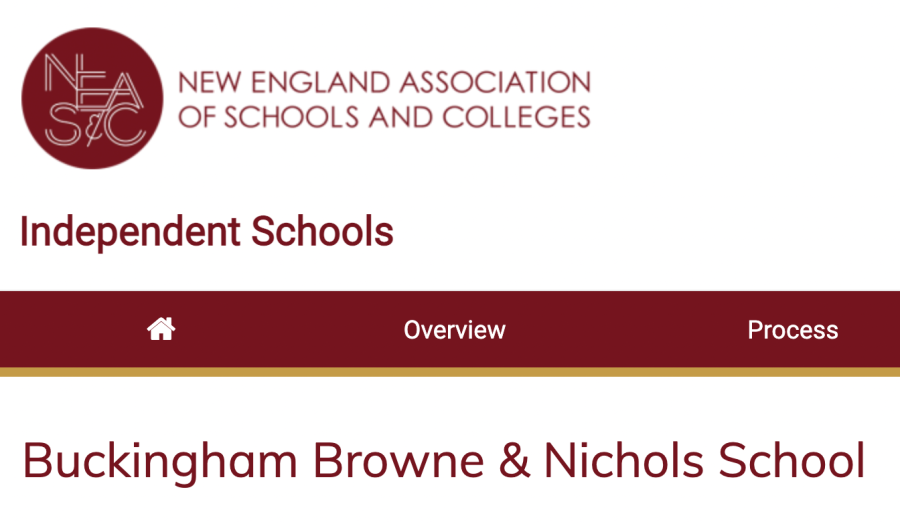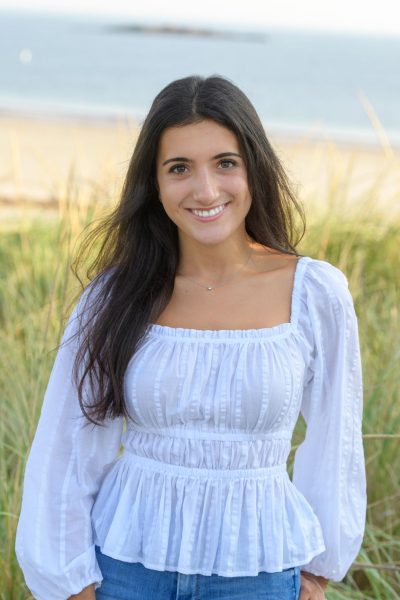School crams for decade final
October 13, 2021
Whether on the lacrosse field, the squash court, or the track, interactions within schools in the Independent School League (ISL) at the student level have been primarily competitive. However, through the New England Association of Schools and Colleges (NEASC) Ten-Year Accreditation Process, ISL schools will hold one another accountable over the next 18 months to improve rather than overpower.
The accreditation process starts with a self-study, during which each school takes a deep dive into their administrative, academic, and athletic processes to assess areas that are efficient and those that need improvement. Over the course of this year, school faculty will collect and compile student perspectives, review documents, hold focus group conversations, and examine past self-study and visiting team accreditation reports to analyze how each facet of the school is operating.
School faculty then creates a document detailing all the inner workings of the institution. The following fall, representatives from NEASC’s Visiting Team—practitioners from NEASC schools and colleges— will observe each school for four days to understand how the school works and evaluate the completed self-study. The Visiting Team will create a report on the school which, along with the self-study, will be the basis for whether NEASC reaccredits the school. Despite the two-year postponement due to the pandemic, all ISL schools have begun preparations to complete what will be the first self-study since 2009.
“We view the decennial NEASC accreditation process self-study as an opportunity to hold a mirror up to our own practice, to reflect on our strengths and opportunities, to examine the alignment between our rhetoric and our reality, to celebrate our successes, and to lean bravely into our areas for growth,” the school’s self-study steering committee wrote in a purpose statement. “Done poorly, this is an exercise in compliance; done well, it is a catalyst for ongoing improvement. We aspire to the latter.”
The steering committee includes Chief Learning Officer Jed Lippard, Director of Institutional Research Susan Cook, and Teaching and Learning Program Manager Vanessa Taylor, and is co-chaired by Middle School (MS) Assistant Director Tony Breen and US Science Teacher Leah Cataldo. There are 11 additional subcommittees for the self-study, each with their own respective team leaders.
The subcommittees represent 11 of the 14 NEASC standards, ranging from in-school culture and program excellence to community health and well-being. In total, 72 faculty and staff are involved in this process.
Dr. Cook said organizing the team has been difficult, as only a few people know the precedent.
“Creating the self-study team is kind of like completing a college application,” she said. “Until you have to do it, you would never know how to do it, and once you’ve done it, you really never need to do it again. I have never been through a process like this before, but if I’m here in 10 years, then I’ll be able to help others with my experience.”
Despite the organizational hassle, Dr. Cook said, she views the self-study as a “thoughtful process where a lot of people’s perspectives get careful attention.”
Dr. Cataldo was on NEASC visiting teams in both 2017 and 2018, which meant she went to other ISL schools and reviewed them under the same NEASC standards that others reviewed BB&N. Dr. Cataldo viewed this experience as an “amazing professional development
opportunity.”
“[As a visitor,] you get to go and interact and engage with a school and see it from the inside out,” she said. “Not only does it allow you to see what schools do well and where they can improve, but it also allows you to say, ‘Hey, we can do that. Why aren’t we doing that?’ or ‘Holy crap! We never want to do that.’”
Additionally, Dr. Cataldo said she’s used her background in science to help her analyze the school as a whole.
“I look at [the process] through a scientific lens because I’m a scientist to the core,” she said. “We are looking to gather evidence and anecdotes that support our story, support where we can grow, and support where we’re knocking it out of the park as a school.”
Dr. Lippard is serving as a member of the NEASC visiting team for The Winsor School this fall and said he looks forward to seeing how another school’s operations and academic program can inform the work taking place at BB&N.
“My whole life has been a quest for ongoing improvement, and I think that’s true as much at the institutional level as it is at the individual level,” he said. “[The self-study is] an accountability mechanism to make sure that we’re not just going through the motions and that we’re learning and growing and adapting and evolving.”
Dr. Lippard said he’s excited to embark on this process to avoid complacency within any area of the school.
“Without having this occasion every 10 years, I do think that some schools run the risk of just not changing. Fortunately, BB&N is not one of those schools,” he said. “We’re meeting the moment with very significant intention and also trying to honor the traditions that make sense.”
In his 30th year at the school, Mr. Breen said, he has been bringing his knowledge of how the school has changed to discussions.
“When I was brought here 30 years ago, this was an institution with an extremely driven academic focus,” he said. “Certainly, within the last decade, many other ingredients have been added to the ever-developing mix of education that we offer, like our advisory program, the co-curricular aspects, and increased athletic programs, and these elements are just as important. They’re not detrimental to the academics, but I always feel like I cover less and less curriculum every year because I’m accommodating so many other things.”
Mr. Breen said he appreciated the wealth of perspectives the team brings to the table.
“One of the strong points that we have going for us in this whole process is it’s a great way to try and bring all campuses—the one institution concept—to the fore,” he said. “I certainly feel like each time we engage in the few months of this process, I know a little bit more about the mechanics and the workings of other divisions than I might have if I had simply spent my time 24/7 at the insular confines of the Middle School.”
US History Teacher Steele Sternberg, co-chair of the Program Excellence Subcommittee along with MS and Lower School Math Coordinator Steven Goldman, said this subcommittee will focus on answering the question, “Can we call what [students] get from going to this [school] every day ‘excellent’”? by analyzing qualitative and quantitative data the team collects.
“The real tick for our committee is defining that word: ‘excellence,’” he said. “Our job will not be to choose one standard of excellence for the school but rather to highlight the different standards, showcase how those are seen in the school, and comment on how conflicting definitions of excellence prevent our school from being the best it could be. How we define excellence is important as we define what BB&N is going to look like in the future.”
On September 30, students played a part in the self-study process by providing feedback in a NEASC-curated survey. The survey had 20 multiple choice options ranging from “I have faculty whom I can confide in” to “I understand the school’s mission,” each with strongly agree, agree, disagree, and strongly disagree as answer choices. The survey concluded with short answers to “What would you change about the school?” and “What do you love about the school?” and a final space to add any additional thoughts.
Angus Crafter ’22 wished for an option between agree and disagree, he said, for a more accurate representation of his opinions.
“I answered agree for a bunch of questions even when I didn’t fully agree, but strongly agree felt too positive and disagree felt too negative,” he said.
Head of School Jen Price said she views the self-study as a “wonderful opportunity to help chart the future of the institution.” After the accreditation process is over, Dr. Price said, she hopes the school continues to operate with its current core values but has also evolved in several ways.
“I hope that the commitment to academic excellence, continual growth and reflection, and ensuring that people feel seen and heard stays the same,” she said. “I hope that there’s more of a cohesivity to our work between campuses, whether you come in here as a four-year-old or as an 18-year-old. I hope that we have found the sweet spot where our kids feel supported from a social-emotional standpoint and also challenged from an academic standpoint.”


